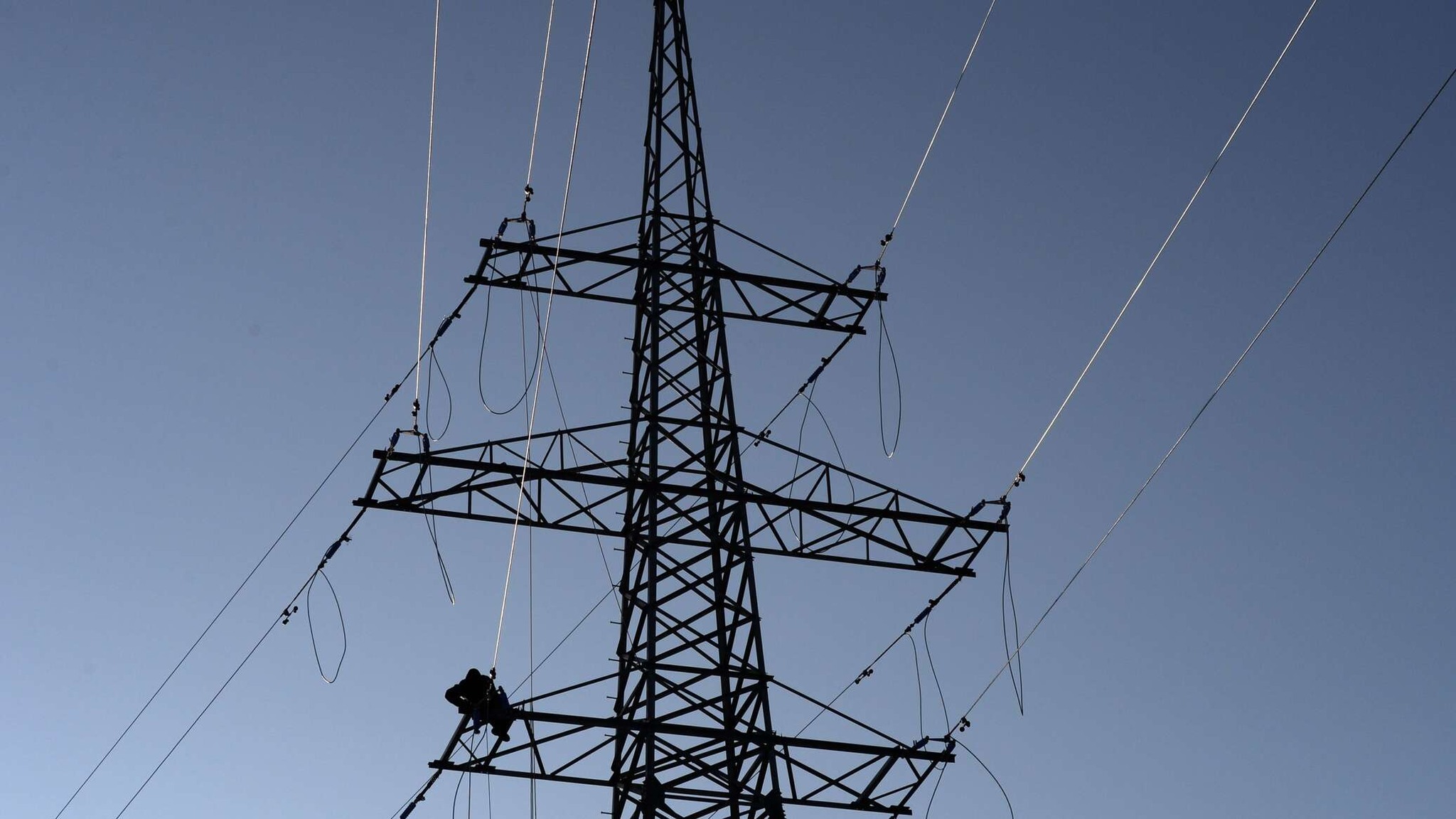How conflict affects the economy in Georgian and Abkhaz societies
In particularly exceptional cases, armed conflict fuels the sustainable development of a country. But in the vast majority of cases, it is absolutely the opposite – it creates a comprehensive trap.
In cases of armed conflict, multilateral backwardness is more likely, which implies: a low-quality education and health system, a criminal environment, unstable investment conditions, etc.
Armed conflicts have changed the development trend of many countries, including Georgia. Although practice shows that after the initial shock and stagnation, the opposing forces have the opportunity to recover. This also happens through cooperation – humanitarian, healthcare, financial, educational, trade, energy, cultural, sports, global or other ways.
The Georgian-Abkhazian conflict inflicted impressive economic losses on both Georgians and Abkhazians.
According to the calculations of the co-author of this article, Vakhtang Charai, these are destroyed private property, destroyed infrastructure, lost investments, huge unforeseen costs (support for IDPs, new state structures, etc.), humanitarian projects (energy, healthcare, agriculture, etc.) and others
The economic cost of the conflict, even with the most conservative estimates, reaches the amount of 65 billion dollars and continues to grow.
It should be noted that the losses of 65 billion do not include the political or moral costs of the conflict, such as losses due to inferior accession to Euro-Atlantic structures, repeated loosening of leadership positions in the region, systematic instability, etc.
This loss also does not include the estimated value of Abkhazia and the former South Ossetian Autonomous Okrug in terms of the value of land, minerals, marine resources, etc., since the conflict is not yet over for Tbilisi and, therefore, the territories are not completely lost.
On the other hand, it should be noted that the conflict also had some “profit”. Of course, it is difficult to equate it with losses, but still it is a solid amount – about $ 3.5 billion.
Among them:
● $2 billion grants to address the aftermath of the 2008 Russian-Georgian war;
● Approximately $700 million spent by UN and EU peacekeeping missions;
● Several hundred million dollars of humanitarian aid from individual states;
● Tens of millions of dollars in grants for NGOs and more.
The real economic income of Abkhazia, in the conditions of non-recognition of its independence by the absolute majority of the countries of the world community, but recognition by Russia and several of its allies after 2008, is very limited.
Support of the West for the principle of Georgia’s integrity also plays a significant role in this.
Due to the non-recognition of the independence of Abkhazia by the international community, international brands are still not officially represented in Abkhazia. Companies from other countries (except Russia) do not have transparent relations with Abkhaz companies. Its transit, tourism, trade and investment opportunities are also limited.
In some aspects, the same can be said about the territories under the control of Tbilisi.
The losses incurred as a result of confrontation are measured not only by political, financial or geostrategic value, but also by the decline in living standards and tens of thousands of jobs lost as a result of the conflict. Not to mention the wasted time and human lives.
Despite different political interests on both sides of the Inguri River, we believe that economic interests may overlap to a large extent. For this, both local and international resources (eg the European Union) can be used.
To compare what potential Abkhazia has lost, we can take the Georgian region of Adjara (Achara) as an example. Its potential has always been rated below that of Abkhazia, which is ideal for our conservative approach.
For greater clarity, we add that Abkhazia is ahead of Adhara:
● By territory — 3 times (Abkhazia — 8,661 km2, Adjara — 2,880 km2);
● By the length of the sea area – 4 times (Abkhazia – 195 km, Adjara – 50 km).
Although the structure of the economy of Abkhazia varies considerably depending on the regions, it is largely import-dependent and service-oriented, like the Adjara region.
According to data for 2019 (specially selected pre-Covid year):
● The economy of Adjara is three or more times larger than the economy of Abkhazia and is about 1.8 billion dollars, as opposed to Abkhazia – 540 million dollars.
● An almost fourfold difference in export-import volumes (Abkhazia – $400 million, Adjara about $1.5 billion) in favor of Adjara. At the same time, the final destination of exports from Abkhazia is limited mainly to Russia and Turkey, which significantly reduces its potential and makes it dependent on even the slightest political fluctuations.
● The number of employed people in Achara is approximately 3 times (126.1 thousand) higher than the number of employed in Abkhazia (42.2 thousand), with a difference in population of only 45% (the population of Abkhazia is 245 thousand, the population of Achara is 355 thousand Human).
● The average salary in Achar is $340, twice the $168 in Abkhazia.
● Unclear situation with pension provision. Russian citizens living in Abkhazia (except all Georgians) generally receive a Russian pension of up to about $150, which is about 2 times more than the Georgian pension. However, Georgian pensioners enjoy free universal health care (which residents of Abkhazia can also use) and various other programs. In sum, this significantly exceeds the seemingly higher Russian pension.
A separate topic for discussion is the tourism industry, in which Adjara stands out in terms of the number of tourists and geographical diversification, as well as income, namely:
● The number of visitors to Abkhazia is about 1 million people a year, but about half of them are one-day tours. Adjara was visited by about 2.8 million foreigners.
● Almost all foreign visitors to Abkhazia are from Russia. And the geographical diversification of visitors to Adjara exceeds 150 countries, 60% of which are tourists from neighboring countries, and the remaining 40 from the rest of the world.
● In terms of income, Adjara generates about 3.3 times more income than Abkhazia (according to Abkhazian data, there is $1 billion a year).
● According to Abkhazian data, about $30 million was invested in the republic in 2019, which is a fairly substantial amount. But this is about 6.5 times less than the 200 million mark in Adjara. Along with foreign investments, the role of local investments should also be noted, which further enhance Adhara’s advantage.
Adjara is ahead of Abkhazia not only in the tourism sector, but also in manufacturing, processing, construction, transit, industry, maritime economy, digitalization, etc.
It has always been believed that the potential of Abkhazia is much higher than that of Adjara. But it is obvious that the potential itself does not mean anything if its capabilities and participation in the process are not realized.
Moreover, as a result of conflicts, not only Abkhazia, but also Georgia as a whole lags behind its real potential. Together with Abkhazia, this would not only be 10% higher (this is the share of Adjara in the economic structure of Georgia). It is likely that the results could be several times higher than today’s indicators, including: higher annual economic growth, more strategic projects, more investments attracted, fewer unjustified budget expenditures, etc.
The advantage that Adjara demonstrates in comparison with Abkhazia is due not only to the limited actions of Abkhazia, but also to the advantage of Adjara itself. It is in a context that has already become the norm for Georgia in terms of institutional advantage: low levels of corruption, victory over organized crime, a safe environment, progressive reforms for doing business, etc.
This can never be achieved by “friendship” with Russia. The reason is simple: the opposite environment is natural for Russia.
A separate issue is the comparison of Adjara and Abkhazia in the context of the coronavirus pandemic. It, first of all, created huge difficulties for both regions in terms of health care, but later developed into a full-blown economic problem.
It can be said that by 2021 both regions have already relatively recovered from the globally negative situation compared to the chaotic 2020. Although no one knows yet how these processes will continue in the future.
But it can already be said that Adhara, like Georgia as a whole, stands out for much more support and opportunities compared to Abkhazia, whether in terms of international financial assistance, timely delivery of certain equipment, variety of vaccines or other aspects.
In this section, we describe the modeling of economic policy using the general equilibrium model.
Economic policy modeling assumes renewal of Georgian-Abkhazian economic relations, in particular Abkhazia’s involvement in international trade (scenario 1) and capital inflows through improved investment climate (scenario 2) or a combination of both (scenario 3).
A 100% tariff rate is considered a trade restriction. Full trade liberalization implies a 0% tariff rate.
In other words, in the first case, trade is critically difficult, and in the second case, it is encouraged as much as possible.
Macroeconomic data for Abkhazia was taken for 2019 (see Table 1) as statistics for 2020 and 2021 are not yet available and would be inaccurate due to the pandemic.
The table shows that in 2019 the volume of production amounted to 538 million dollars, GDP 523 million dollars, the trade balance was negative – 218.2 million dollars, the volume of investments – 55.5 million dollars, the state budget revenues were 156.5 million dollars, of which 48% falls on the share of the Russian Federation and its annual financial assistance.
Production: $538 million, production share: 1.00
Salary: $86 million, production share: 0.16
GDP at market prices: $523 million, production share: 0.97
Private spending: $575 million, production share: 1.07
Government spending: $110 million, production share: 0.20
Investment: $56 million, production share: 0.10
Export: $92 million, production share: 0.17
Import: $310 million, production share: 0.58
2.Tax revenues
VAT and excise: $0.012 million, production share: 0.02
Import tariff: $0.014 million, production share: 0.03
Income tax: $0.013 million, production share: 0.02
Income tax: $0.01 million, production share: 0.02
Total: $49 million, production share: 0.09
3.Revenues, expenditures and balance of the state budget
Revenue: $157 million, production share: 0.29
Non-tax revenues: $0.11 million, production share: 0.20
Operating expenses: $114 million, production share: 0.21
Goods and services: $110 million, production share: 0.20
Interest: $0.002 million, production share: 0.00
Transfers and subsidies: $0.002 million, production share: 0.00
Capital expenditure: $38 million, production share: 0.07
Fiscal balance: $0.005 million, production share: 0.01
4.Payment balance
Trade balance: – $218 million, production share: – 0.41
Net private transfers: $76M, production share: 0.14
Net official transfers: – $3.8 million, production share: 0.01
Current balance: – $51 million, production share: – 0.10
External debt: $24 million, production share: 0.05
Debt service: $1.4 million, production share: 0.003
Based on the data presented in Table 1, the Georgian-Abkhazian economic cooperation was modeled on the basis of the general equilibrium model. The specification of this model includes a system of many interrelated equations.
Therefore, we will not give a detailed explanation of them and only provide the results obtained from the model.
In the case of a free trade scenario, the model assumes that both sides open economic borders. According to the model, the opening of borders implies a tariff rate of 0% (full closure of borders implies a 100% tariff rate).
By opening the borders, the Georgian side gets access to the market of Abkhazia, and Abkhazia not only to the entire Georgian market, but also to the world market via Georgia.
Thus, it also gets all the opportunities that the Georgian side has. In particular, the advantage of free trade under the Association Agreement with the European Union, China and many other countries, as well as various bilateral and multilateral business development opportunities.
| Base level (in dollars) | Result of trade liberalization (in dollars) | % the change | |
| Income | 538.4 | 597.6 | 11.00 |
| Consumption | 575.5 | 764.5 | 32.85 |
| Total Savings | 96.91 | 91.5 | -5.56 |
| Government savings | 26.92 | 32.3 | 20.00 |
| Tax revenues | 37.69 | 43.0 | 14.28 |
| Export | 91.7 | 139.9 | 52.59 |
| Import | 309.9 | 376.9 | 21.59 |
As can be seen from Table 2, collaboration modeling looks quite attractive, although it has some limitations.
Given the economic potential of Abkhazia, the renewal of Georgian-Abkhazian trade relations, in particular, trade and attraction of investments, will increase profits by 11 percent, consumption by 32.85%, tax revenues by 14.28%, exports of all products by 52.59% and imports in terms of GDP – by 21.59%.
It should be noted that savings will be reduced by 5.56%, but this will not be the impoverishment of the population, but the inclusion of their savings in entrepreneurial activities.
It should be noted that the local resources of the Abkhazian economy are quite limited for further development. Therefore, it is important to receive foreign investment (for example, in the tourism, manufacturing, agriculture and other sectors).
As a result, other macroeconomic parameters will also increase significantly. For comparison, the impact of foreign direct investment on economic growth in Adjara is 1.7 times higher than in Abkhazia. This indicates that productive capital is invested more in Adjara than in Abkhazia, where less productive investments are made.
However, in order to attract foreign direct investment, it is necessary to create an appropriate business and institutional environment.
Thus, the growth presented in the table is possible if, along with the liberalization of trade in Abkhazia, a number of reforms are carried out aimed at improving the business environment.
The simulation results shown in the table cannot be viewed as a prediction. Modeling shows the potential of Abkhazia if the impediments to economic growth are removed.
These obstacles are trade restrictions with Georgia and the rest of the world (with the exception of Russia, parts of Turkey and other secondary markets).
The table also shows the benefits that Abkhazia will receive from economic integration with Georgia.
The figures given in the article clearly make it possible to assess both the current and future potential of Georgian-Abkhaz relations. The data leads to the following conclusions:
● While Abkhazia’s potential has always been higher than Adjara’s, in today’s reality the latter’s economy is at least three times faster than the former, and, in some respects, the number is even higher.
● Adjara enjoys the benefits of Georgia’s open economic policy, while Abkhazia’s openness is limited to ties with Russia and a few other relatively minor markets, which greatly limits its real potential.
● Georgian-Abkhazian economic relations will allow Abkhazia to seize the opportunities of the global economy and reap significant benefits, which can subsequently be expressed in a higher standard of living, far ahead of today’s (in terms of resources, markets, infrastructure, security, social aspects, etc.) . And this is an important goal for any society.


